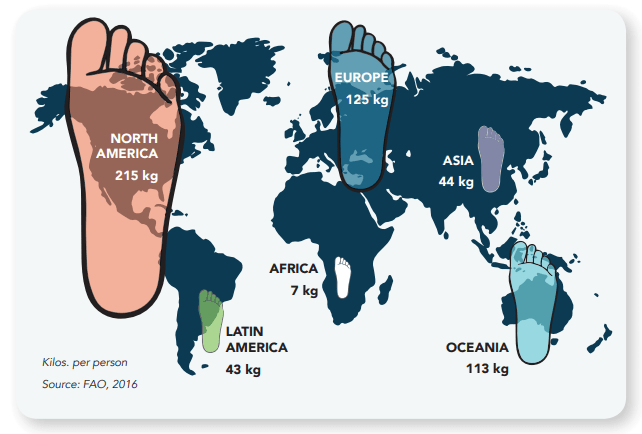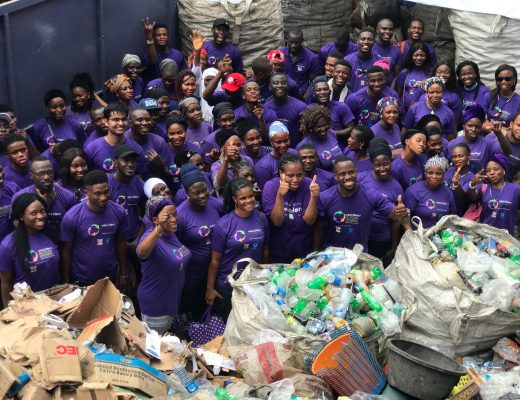Paper is one of the easiest materials to recycle, but it still makes up the largest component of Americans’ garbage.
A full 25% of global solid waste is paper and paperboard (also called “cardboard”). Eliminating paper waste completely would require a Herculean effort for most people, but whether you want to do good, better, or best, you can reduce your paper waste and recycle more of the paper you do use.
General Stats and Facts About Paper (Consumption & Production)
- Global paper use has increased by 400% in the last 40 years.
- The average person in Africa uses more than 7 kg of paper every year. That’s the highest paper usage figure per capita worldwide.
- Every year more than 24 billion newspapers, 350 million magazines and 2 billion books are published in the US alone.
- This is how per capita paper consumption (by region) looked on the World map not so long ago, in 2016:
- To meet the global demand paper production volumes currently exceed 300 million metric tons per year. Perhaps more people should switch to ebooks?
- This number is over 400 million when we look at the combined paper and cardboard data
Despite the overall increase in waste generation, paper waste has been declining since 2005.
Less paper is being generated to throw away, thanks to increasing digitization. But with paper filling a full quarter of our garbage bins, there is still a lot of it going to waste.

Good
You can take simple steps to reduce the amount of paper you use. Despite China’s ban disrupting the curbside recycling system in America, paper is still recyclable in most communities. Paper recycling takes almost no effort and makes a big difference to the planet.
Here is how to be good about paper waste:
- The simplest way to reduce the amount of paper and cardboard you throw away is to recycle paper through your curbside program.
- Recycle only clean paper. Wishful recycling of soiled paper can contaminate the entire load.
- Subscribe to the digital version of the newspaper instead of print
- Set your printer to two-sided printing, and reuse paper before recycling it.
- Choose paper products made with recycled content.
Better
If you want to do better than good, or if your community does not have curbside recycling, a little effort goes a long way.
Contact your waste management agency to let them know you value recycling. To manage paper waste better, you’ll need to recycle more and gradually replace paper products with reusable ones:
- Register on www.wecyclers.com and search our outlets close to you on your computer to find a recycler near you. Even if you have curbside service, use the database to find out where you can recycle other types of paper like paperback books or drink boxes.
- Dirty paper towels, disposable napkins, and pizza boxes cannot be recycled. But they can be composted. Find out if your community offers yard waste recycling If they don’t, start a home compost bin.
- Avoid the paper or plastic problem with reusable shopping and tote bags.
- Replace sack lunches with a lunchbox
- Digitize everything you can. Use note-taking apps and electronic calendars instead of notebooks; sign up for electronic billing and digital magazines
Best
Because paper is easily recyclable, paper products are often the greener choice among materials. So while plastic-free is a goal for many, few people seriously attempt a paper-free lifestyle.
To achieve zero waste, do the best you can to eliminate paper and recycle everything you do use. If you’ve already accomplished the Good and Better goals, you will have noticed that food packaging makes up most of the paper waste you have left.
- Zero waste grocery shopping requires a major shift in shopping habits — seeking out new stores and bulk products, carrying reusable containers, and making a lot more food from scratch — but it will have a big impact on the amount of paperboard you use.
- Eliminating pizza boxes and take-out containers will require more home cooking.
- Next, consider napkins, tissues, and paper towels. Switching to cloth napkins is easy, while handkerchiefs may be a little harder. Breaking the addiction to paper towels instead of just composting them will require rethinking how you clean. But sponges, scrub brushes, and cloth towels work just as well or better than paper.



